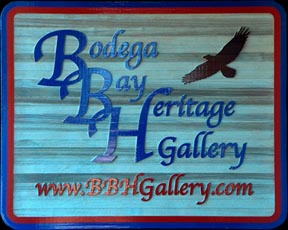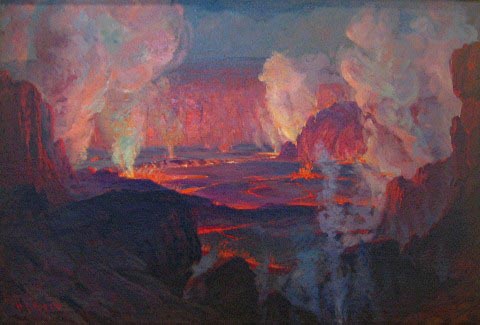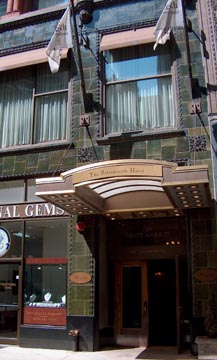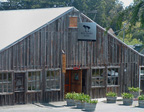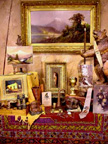“Out of Town” has been the abrupt proclamation on many a studio door during the dog-days (fog days would perhaps be more in line with truth), but the flight of artists from town has brought to us a lot of good things from field and forest, from woodland, marsh and mountain. And where, good friends, in all the world does nature show herself in more varied forms and moods and personalities than here in this pocket ‘twixt the Sierras and the Sea?
In this great showplace of the expressions of nature, every painter can find his affinity -- that which most allures him -- whether it be the wooded mountain, hooded in amethyst mists; or the shady canyon whose breast is cooled with the spring that leaps from the mountain’s side; or the valley below, whose pregnant soil yields millions of yellow heads of grain, nodding to the summer breezes; or the deep redwood groves, where the woodwardia grows, the handmaiden of the stately sequoias: or a bit of lagoon with spectral eucalyptus hovering in the distance like the shades of the departed; or a bit of the sea, the wild, blue sea, with a crooning cypress beside it, swaying with the wind-blasts, like a human thing, fate battered; or the red-brown marshes, besplashed with green, embedding a bit of blue sea. All these -- and infinitely more -- are the hereditary properties of California artists and art lovers. They belong to the seeing ones by gift of God, and no Rockefeller nor Morgan nor other money king can take it from them -- the sole wealth of a lot of happy fellows who pity the poverty of the rich who have not eyes to see.
* * *
That the painters hereabouts have been o’er busy, a visit to the interesting little exhibit at 119 Geary street gives evidence.
Here are some clever bits -- and a few rather indifferent bits -- of recent work from C. Chapel Judson, Sidney Yard, H. W. Hansen, Henry Raschen, Harry Seawell, C. D. Robinson, John Gamble, James Griffin, L. P. Latimer, Giuseppi Cadenasso, H. R. Bloomer, Will Sparks, C. Rodgers, Carl Dahlgren, Gordon Coutts, T. H. Guptill, C. P. Neilson, C. Jonnevold, M. Burrall, Nels Hagerup, H. D. Gremke, E. W. Currier, Eugen Newhaus, Harry C. Best, K. W. Newhall, Sarah Bender de Wolfe, A.B. Scott and M. Herrick Ross.
Now, not all of these are in the painter’s best form, notably one of John Gamble’s, “Wild Flowers Near Willow Camp,” a commission of which I would not have accused this clever chap if he hadn’t acknowledged its parentage. It is on the same lines as much of his best work, but he must have painted it on an off day or in the dark. However, he may be forgiven on the delicacy and beauty of his “Soda Bay,” which shows him in his usual good form. But don’t do it again, will you, Mr. Gamble? Back to the Top
|
